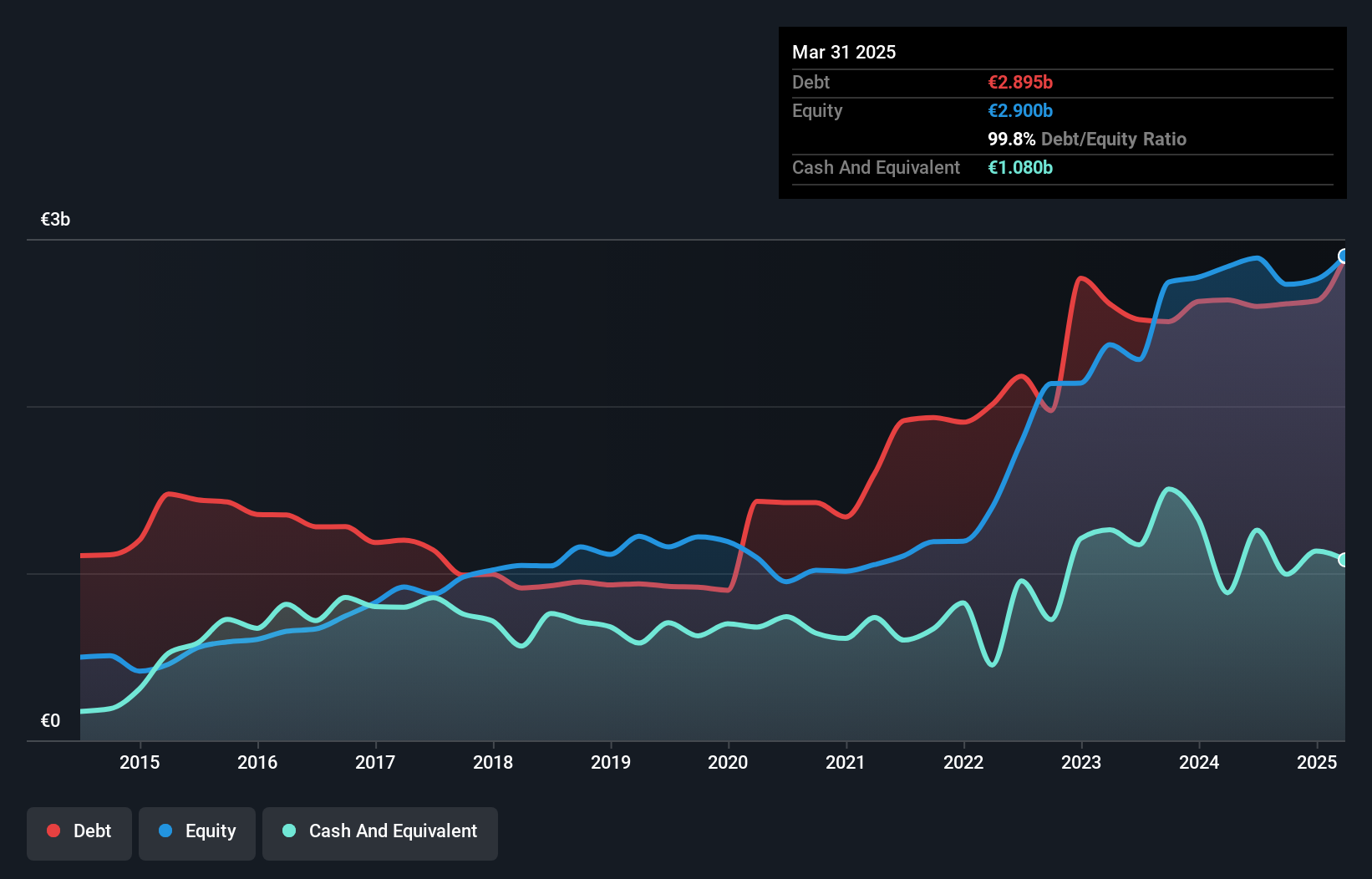- Greece
- /
- Oil and Gas
- /
- ATSE:MOH
Motor Oil (Hellas) Corinth Refineries (ATH:MOH) Takes On Some Risk With Its Use Of Debt
Warren Buffett famously said, 'Volatility is far from synonymous with risk.' So it seems the smart money knows that debt - which is usually involved in bankruptcies - is a very important factor, when you assess how risky a company is. We note that Motor Oil (Hellas) Corinth Refineries S.A. (ATH:MOH) does have debt on its balance sheet. But should shareholders be worried about its use of debt?
What Risk Does Debt Bring?
Debt assists a business until the business has trouble paying it off, either with new capital or with free cash flow. In the worst case scenario, a company can go bankrupt if it cannot pay its creditors. However, a more common (but still painful) scenario is that it has to raise new equity capital at a low price, thus permanently diluting shareholders. Of course, debt can be an important tool in businesses, particularly capital heavy businesses. The first thing to do when considering how much debt a business uses is to look at its cash and debt together.
What Is Motor Oil (Hellas) Corinth Refineries's Net Debt?
As you can see below, at the end of March 2025, Motor Oil (Hellas) Corinth Refineries had €2.89b of debt, up from €2.63b a year ago. Click the image for more detail. On the flip side, it has €1.08b in cash leading to net debt of about €1.81b.

How Healthy Is Motor Oil (Hellas) Corinth Refineries' Balance Sheet?
According to the last reported balance sheet, Motor Oil (Hellas) Corinth Refineries had liabilities of €1.10b due within 12 months, and liabilities of €3.31b due beyond 12 months. On the other hand, it had cash of €1.08b and €999.6m worth of receivables due within a year. So its liabilities total €2.33b more than the combination of its cash and short-term receivables.
This deficit is considerable relative to its market capitalization of €2.65b, so it does suggest shareholders should keep an eye on Motor Oil (Hellas) Corinth Refineries' use of debt. This suggests shareholders would be heavily diluted if the company needed to shore up its balance sheet in a hurry.
View our latest analysis for Motor Oil (Hellas) Corinth Refineries
We measure a company's debt load relative to its earnings power by looking at its net debt divided by its earnings before interest, tax, depreciation, and amortization (EBITDA) and by calculating how easily its earnings before interest and tax (EBIT) cover its interest expense (interest cover). Thus we consider debt relative to earnings both with and without depreciation and amortization expenses.
With net debt to EBITDA of 2.5 Motor Oil (Hellas) Corinth Refineries has a fairly noticeable amount of debt. On the plus side, its EBIT was 8.7 times its interest expense, and its net debt to EBITDA, was quite high, at 2.5. Importantly, Motor Oil (Hellas) Corinth Refineries's EBIT fell a jaw-dropping 55% in the last twelve months. If that decline continues then paying off debt will be harder than selling foie gras at a vegan convention. There's no doubt that we learn most about debt from the balance sheet. But ultimately the future profitability of the business will decide if Motor Oil (Hellas) Corinth Refineries can strengthen its balance sheet over time. So if you want to see what the professionals think, you might find this free report on analyst profit forecasts to be interesting.
Finally, a business needs free cash flow to pay off debt; accounting profits just don't cut it. So we always check how much of that EBIT is translated into free cash flow. Looking at the most recent three years, Motor Oil (Hellas) Corinth Refineries recorded free cash flow of 44% of its EBIT, which is weaker than we'd expect. That weak cash conversion makes it more difficult to handle indebtedness.
Our View
Mulling over Motor Oil (Hellas) Corinth Refineries's attempt at (not) growing its EBIT, we're certainly not enthusiastic. But on the bright side, its interest cover is a good sign, and makes us more optimistic. Overall, we think it's fair to say that Motor Oil (Hellas) Corinth Refineries has enough debt that there are some real risks around the balance sheet. If all goes well, that should boost returns, but on the flip side, the risk of permanent capital loss is elevated by the debt. The balance sheet is clearly the area to focus on when you are analysing debt. However, not all investment risk resides within the balance sheet - far from it. We've identified 3 warning signs with Motor Oil (Hellas) Corinth Refineries (at least 1 which shouldn't be ignored) , and understanding them should be part of your investment process.
If you're interested in investing in businesses that can grow profits without the burden of debt, then check out this free list of growing businesses that have net cash on the balance sheet.
New: Manage All Your Stock Portfolios in One Place
We've created the ultimate portfolio companion for stock investors, and it's free.
• Connect an unlimited number of Portfolios and see your total in one currency
• Be alerted to new Warning Signs or Risks via email or mobile
• Track the Fair Value of your stocks
Have feedback on this article? Concerned about the content? Get in touch with us directly. Alternatively, email editorial-team (at) simplywallst.com.
This article by Simply Wall St is general in nature. We provide commentary based on historical data and analyst forecasts only using an unbiased methodology and our articles are not intended to be financial advice. It does not constitute a recommendation to buy or sell any stock, and does not take account of your objectives, or your financial situation. We aim to bring you long-term focused analysis driven by fundamental data. Note that our analysis may not factor in the latest price-sensitive company announcements or qualitative material. Simply Wall St has no position in any stocks mentioned.
About ATSE:MOH
Motor Oil (Hellas) Corinth Refineries
Motor Oil (Hellas) Corinth Refineries S.A.
Slight risk with mediocre balance sheet.
Market Insights
Community Narratives




